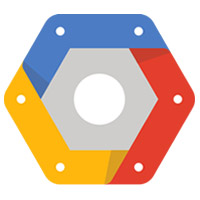
Google on Wednesday launched a public beta version of Nearline Storage, the latest addition to the Google Cloud Platform.
Nearline seeks to reel in enterprises to the wider Google Cloud Platform with the promise of low-cost, low-latency storage for limitless amounts of data.
Nearline has all of the benefits of offline, or “cold,” storage, but the data it houses is available in a matter of seconds instead of hours, according to Avtandil Garakanidze, a product manager for the Google Cloud Platform.
Like other Google Cloud storage solutions, all Nearline data is encrypted at rest, he said.
“Your data is also protected through redundant storage at multiple physical locations,” Garakanidze told the E-Commerce Times. “OAuth and granular access controls form strong, configurable security parameters, and Google Cloud Storage Nearline upholds the same compliance standards as all of the Google Cloud Platform services.”
To help ease migration pains, Google has partnered with several backup and storage companies to help streamline customers’ moves to Nearline.
Veritas is delivering NetBackup, and Geminare is bringing its Disaster Recovery as a Service to Google Cloud. NetApp is offering its Steelstore software to help compress and encrypt data for delivery to Nearline. Iron Mountain will help with the ingestion of offline data, and even accept physical disks for upload to Nearline.
Garakanidze did not indicate when Nearline is expected to move out of beta.
The Market for Cold Storage
Some enterprises are hesitant to move data off campus because they’re concerned about security breaches. Others fear the costs of maintaining large amounts of data online.
Storing data online costs twice as much as storing data using Nearline, according to Google. Cold storage and Nearline cost about the same, but Nearline data can be accessed much faster — in a few seconds, as opposed to several hours — or more.

There’s a high demand for cold storage from large enterprises and data-intensive organizations, according to Jim Rapoza, senior research analyst at the Aberdeen Group.
“For a long time now, businesses have been using offline or near-offline storage as a way to keep data available without incurring the costs of keeping it on live systems, servers and storage infrastructures,” he told the E-Commerce Times.
The issue with traditional offline storage is that when the data is needed, there can be a lag of hours or even days before it’s restored. Cold storage is useful for locking away seldom-used data, but sometimes that information is needed immediately.
“Cloud-based systems like [Nearline] make it possible to have access to the data without too long a wait, while still having an inexpensive and near-infinite ability to store that data,” Rapoza said.
What’s the Catch?
With prices so low and promises so big, some enterprises may wondering what’s in the fine print. There may be no catch, Rapoza said. It simply might be a way for Google to win more hearts and minds.
“It’s possible that Google sees this as a good way to build up interest in their cloud offerings, especially in comparison to Amazon, who have a similar product called ‘Glacier,'” Rapoza observed. “By competing on price and speed of data access, they could be looking to pull customers in and use this as an entry into their other cloud offerings.”
Nearline will be fully integrated into the Google Cloud Platform, and there won’t be a need to work with new programming models, Google’s Garakanidze pointed out. The syntax will remain the same across all Google Cloud products.
With Amazon still claiming the lion’s share of the market for cloud service providers, Google and Microsoft have increased their focus on economics.
Amazon is not inclined to rest on its laurels — it has expanded its services just as quickly as its rivals — but Microsoft and Google continue to drive down cloud storage prices in an effort to loosen Amazon Web Services’ grip.












































It is possible to have access to the data without too long a wait and is inexpensive. This is the main advantage of Cloud-based systems.